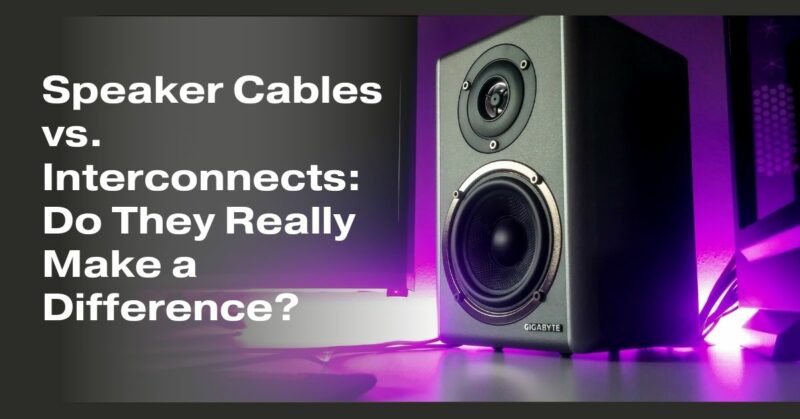In the world of audio equipment and accessories, debates over the significance of different components are common. One such debate revolves around speaker cables and interconnects – the cables that connect your audio components. Do these cables genuinely make a difference in audio quality, or is it all just marketing hype? In this article, we’ll explore the factors at play and help you understand whether speaker cables and interconnects can affect your audio experience.
**1. The Role of Cables in an Audio System
To evaluate the impact of speaker cables and interconnects, it’s essential to understand their roles in an audio system:
- Speaker Cables: These cables connect your amplifier or receiver to your speakers, transmitting the amplified audio signal from your source to your speakers. They are typically longer and carry higher power levels.
- Interconnects: Interconnects, often referred to as RCA or audio cables, link your audio source components (e.g., CD player, turntable, preamp) to your amplifier or receiver. They transmit low-level audio signals.
**2. The Electrical Basics
In a perfect world, a cable’s sole function would be to transmit electrical signals faithfully from one component to another. However, real-world factors can introduce subtle changes:
- Resistance: All cables have electrical resistance. For speaker cables, this resistance can be a critical factor when dealing with long cable runs and low-impedance speakers. It can affect damping and power transfer.
- Capacitance and Inductance: These electrical characteristics in cables can potentially influence the high-frequency response of audio signals, especially for interconnects.
**3. The Importance of Cable Quality
The debate surrounding cables often centers on the quality of materials and construction. High-quality cables may feature:
- Higher Purity Conductors: Some audiophiles argue that cables with higher purity conductors (e.g., oxygen-free copper) can result in better signal transmission.
- Better Shielding: Proper shielding in interconnects can reduce electromagnetic interference (EMI) and radio frequency interference (RFI).
- Build Quality: Quality connectors, insulation, and overall construction can lead to better longevity and reliability.
**4. Perceived vs. Measurable Differences
The effect of speaker cables and interconnects on audio quality can be challenging to measure objectively. While some audiophiles claim to perceive significant improvements with high-end cables, scientific studies often show minimal or no audible difference between cables within reasonable quality ranges.
**5. Room for Subjectivity
Listeners’ perceptions and biases can play a substantial role in their assessments of cable differences. The psychological phenomenon of the “placebo effect” may lead individuals to believe that expensive cables sound better, even when objective measurements do not support this claim.
**6. When Cables Do Matter
There are specific scenarios where cables can make a discernible difference:
- Long Cable Runs: Longer speaker cable runs can benefit from lower resistance to maintain adequate damping and power transfer.
- High-End Systems: In extremely high-end audio systems with top-tier components and revealing speakers, the subtleties of cable quality may become more apparent.
- Interference Prone Environments: In environments with significant EMI or RFI, proper shielding in interconnects can be crucial.
Conclusion: Finding the Balance
The debate over speaker cables and interconnects boils down to personal preference, system quality, and the critical role of perception in audio enjoyment. It’s important to strike a balance between reasonable cable quality and personal budget constraints. While high-quality cables may offer some advantages in certain situations, they should not overshadow the importance of other components like speakers, amplifiers, and room acoustics in achieving the best audio quality within your budget. Ultimately, the decision to invest in premium cables should be driven by your specific audio setup and preferences.

